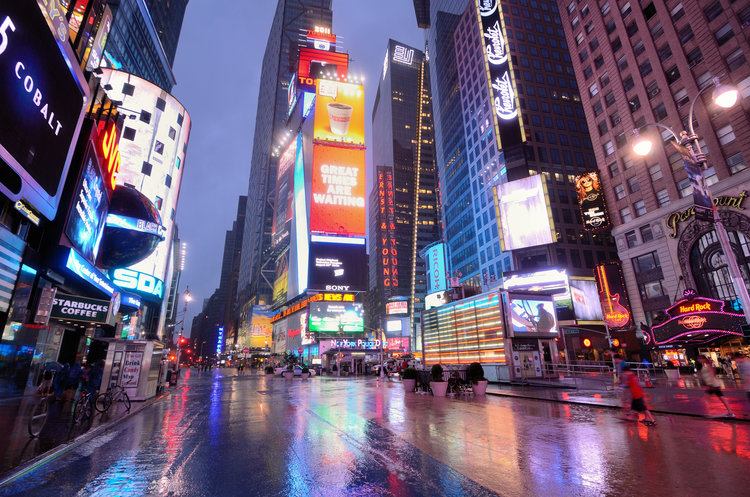

Video walls are large video displays typically comprising a number of panels. They can be seen in places such as museums, corporate lobbies, theme parks, sporting events and entertainment venues. According to research firm MarketsandMarkets, it’s a sector that’s growing rapidly—rising to $18 billion in 2020 and projected to reach $24 billion in 2025, up from just $4 billion a few years ago.
Three technologies are used to create video walls—rear projection video wall cubes (RPC), LCD narrow-bezel flat panel (SNB), and narrow pixel pitch LED (NPP). Here, we’ll consider only NPP technology because NPP offers the highest resolution, is bezel-less, and is poised to dominate the video wall market.
Market research firm Futuresource Consulting identified five key markets for NPP solutions. We detail them below, in order of greatest revenue opportunity. Note that each of these markets is evolving at a different rate since NPP technology prices are becoming increasingly competitive with RPC and SNB offerings.

Corporate/exhibition is the most promising market segment and is expected to be $1 billion in hardware alone by 2025, not including several billion projected in content, installation, maintenance, and support fees.
Control rooms, which include situation rooms, network operation centers, traffic management centers, broadcasting or distribution monitoring systems, command and control centers, and utilities and process control centers, are the second largest market, representing about $500 million in hardware. There is a good chance that the control room sector will grow to be a bigger portion of overall NPP installations due to expected price reductions. Futuresource states, “It is expected that NPP LED will develop into key verticals, like control room, which may push volumes and values onto the next level.”
Broadcast and retail sectors are roughly the same size as control room, with equally strong potential for growth, especially with luxury retail. Retail spends upwards of $40 billion on in-store displays to drive point-of-purchase decisions, and over $100 billion is spent on digital advertisements to drive purchases across industries in the U.S. alone. As noted, NPP is already successful in retail, especially in luxury stores; this sector will grow as more price-sensitive implementations become available over time.
The fifth and final segment, public display, is similar to broadcast and retail in its price sensitivity combined with a desire for high quality technology. Public displays can be found in education, healthcare, hospitality, leisure/pleasure and transport settings, each of which has been geared toward cheaper, lower resolution, and long lifetime solutions because of frequent 24/7 operation.
Casinos are another exciting market. The industry spends about $18 billion each year on gaming supplies, and video gaming technology has already grossed over $1 billion in just one U.S. state. Most of these gaming environments include a display setup that could easily be replaced by a holographic system for a much more engaging experience.
Major display manufacturers in the space include industry giants such as, Sony, Samsung and Planar. However, there is a new company that has industry insiders buzzing. Enter Light Field Lab.
Light Field Lab, in San Jose, California, is developing a groundbreaking holographic display technology. Although still in development, the Lab’s first prototype has garnered high levels of interest from some of the world’s most respected experts in the space.

The LFL team is targeting video walls as its initial launch market. EVP of Creative Development Jeff Barnes states, “We see the video wall market as an ideal platform to leverage our unique technology. Our displays are optimized for experiencing larger socially immersive experiences without the need for headsets or glasses.”
Beyond obvious implementations such as cinema, museums and retail spaces, holographic displays are suited to a multitude of ancillary use cases. For instance, theme parks could replace their animatronic robots with holographic displays, which would reduce costs and offer dynamic programming of content—an option not available with current technologies. That’s just a hint of the powerful solutions that holography can offer the video wall industry — and it’s just around the corner.
The overall market for large scale display technology is massive. NPP technology is on the path to dominate the 2D market, but LFL holographic displays aren’t far behind. Light Field Lab believes its holographic displays will help video walls evolve into an even bigger market.